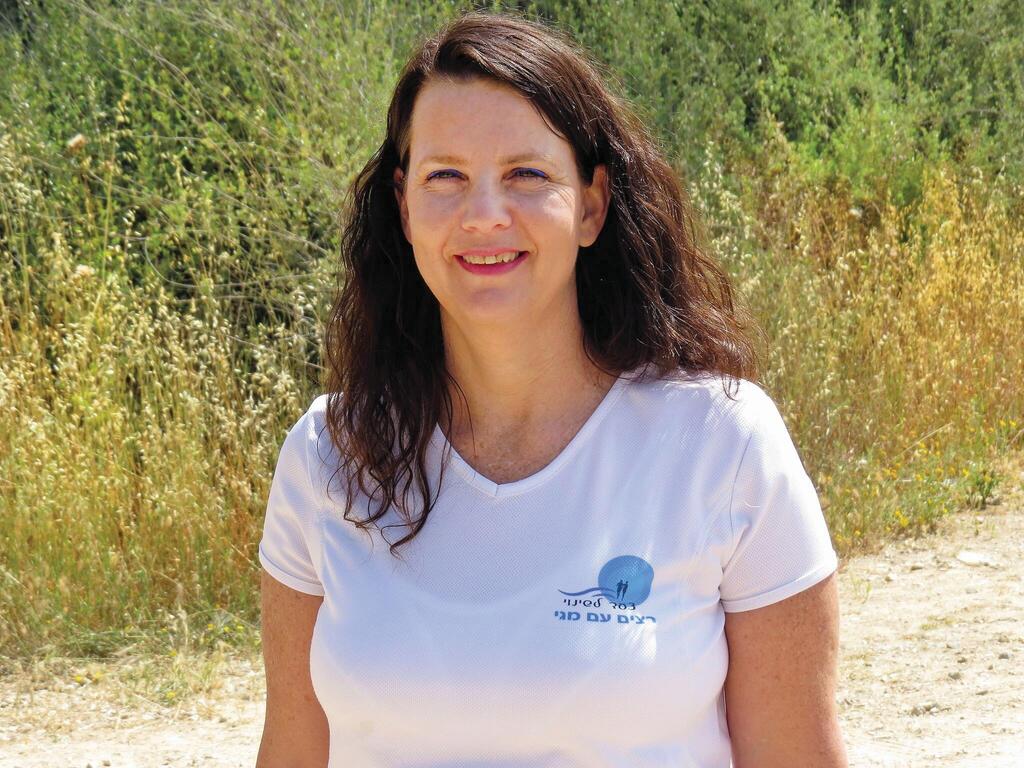Getting your Trinity Audio player ready...
In the year 2000, Israel’s Wingate Institute for Sports opened a new course offering training in running therapy. Maggie Levi, who was at the time certified in NLP, coaching, and running, was among the first to sign up for the course. A year later, she completed her running therapy certification and explained how it can benefit many people inexperienced with sports.
More stories:
How is the treatment conducted?
"We meet on a pre-determined trail and start walking at a pace suitable for the trainee while engaging in a conversation about what concerns them, such as overcoming fear or pain, addiction, depression, blockages, emotional numbness, and more. After a few minutes, as the body begins to warm up, we increase the walking pace until we transition to running.
“Fitness is gradually built. In the initial sessions, most of the training is done with variable-paced walking, and at times, we switch to a short run, starting from a minute. Over time, the duration of the run extends. In more advanced sessions, the ratio between running and walking changes: more running, and less walking,” she explains.
“Near the end of the session, I ask questions like: ‘How did you feel during the session? What insights are you taking away?’ At the beginning of the series of sessions, we set therapeutic goals and adjust them from session to session."
What if the trainee prefers walking without running?
"If they prefer the session to be dedicated to walking, that's what we'll do. However, generally, I encourage them to incorporate running. Running maximizes results and accelerates the treatment’s progress."
Who is therapeutic running suitable for?
"Almost all healthy individuals from the age of 12. The treatment is also suitable for people with no motivation to work out. It's enough for them to have a desire to make a change in their lives to adapt to this therapeutic journey. People with high weight excess (BMI above 30) may not be suitable for running therapy because the weight on the joints creates a load, and the damage outweighs the benefit. However, the treatment can be focused on walking at variable paces. People with underlying health conditions need to consult with their physician and obtain their approval to take part."
Running itself provides many psychotherapeutic benefits. Why is it necessary to incorporate conversation as well?
"The two goals are different. In regular running workouts, the emphasis is on the physiological side: focusing on goals like pace, heart rate, and distance. In therapeutic running, there is no competition. The goal is to allow you to process psychological difficulties through your body while leveraging the benefits that running has on the mind, such as reducing depression and anxiety, improving cognitive function, increasing energy levels, and developing mental resilience.
From a physical aspect, it includes improving heart function and blood flow, balancing blood pressure, cholesterol, and blood sugar, improving sleep quality, and encouraging weight loss. Additionally, some people need a push to make a change or pick themselves up, and the combination of running and therapy succeeds in bringing them to a breakthrough."
What is found in this therapy that makes people change?
"Something in the atmosphere, in the vast spaces, in the act of running itself, elevates energy and strengthens the sense of capability. For example, someone came to me after being hit by a drunk driver while driving. She suffered from depression and anxiety and struggled to get back behind the wheel. In the initial stage, she had to drive to the meeting point, and gradually, parallel to her progress in running, her self-confidence increased. She managed to regain her trust in herself and overcome her anxiety."
What’s the difference between clinical psychologists or CBT therapists who run with clients and therapists in running therapy?
"The difference lies in training and tools. In Israel, few psychologists are dealing with this method. Most of them are running coaches who underwent training in running therapy and additional therapeutic training. As a rule, if you decide to turn to running therapy, make sure the therapist has three qualifications: running coach, certification in running therapy, and certification in therapy."
How is success measured in running therapy?
"Success is measurable, and we assess it on two parallel axes: physical and emotional. If a woman who has never trained in running comes in, she may run for a minute consecutively during the first session, and by the fourth, she may already run for 10 consecutive minutes, indicating progress.
“On the emotional axis, I use a 'score,' a tool taken from NLP. If her goal is to feel better about herself at the beginning of the process, I ask her: ‘How do you feel on a scale from 1 to 10?’ Then we track it, and at the end of each session, this question will be revisited."
And yet, what is required from the trainee in order to see success in this?
"Two things may ensure success: consistency in attending sessions and completing homework assignments. The series of sessions is goal-oriented, and the meeting takes place once a week. To achieve the desired results, the trainee is asked to independently perform 1-2 workouts per week under my guidance."
At what point does the trainee continue alone, without professional guidance?
"The sessions last between three months to half a year. After that, they should have enough tools to engage in running therapy independently and see the benefits."
Can friends or couples train together using this method?
"I'm not aware of therapy in running specifically designed for couples. Running therapy in a group is possible, but it requires constructing a group around specific content that suits all participants. For example, there’s running therapy for survivors of sexual assault or for individuals with social anxiety or those interested in addiction rehabilitation."





